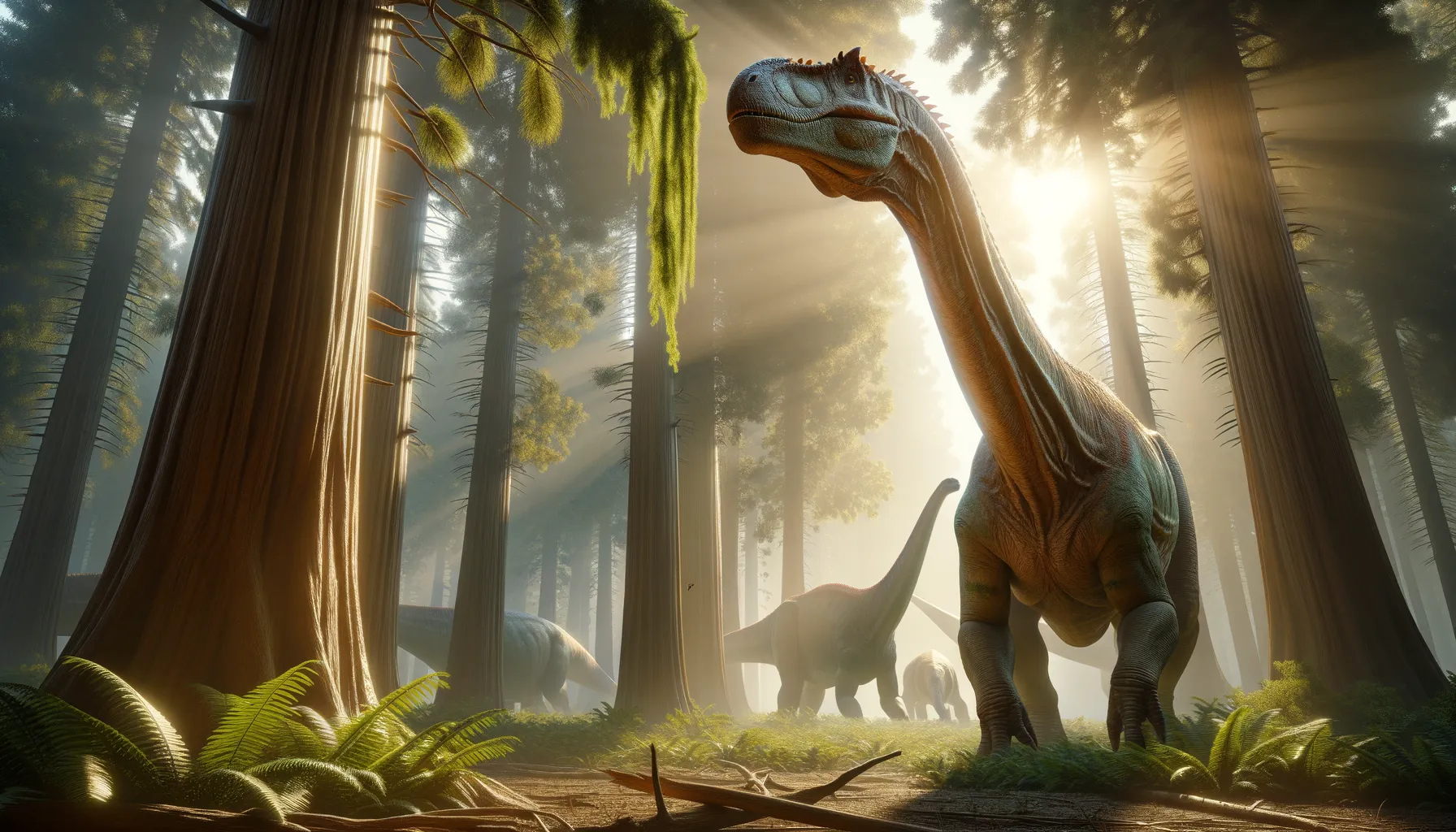
Supersaurus
Towering giant of the Jurassic world.
Period
Jurassic
Length
Stretched over 100 feet long.
Height
Could reach up to 50 feet tall.
Weight
Estimated to weigh between 35 to 40 tons.
Supersaurus was one of the largest dinosaurs known to have ever walked the Earth. Belonging to the group known as sauropods, these giants lived during the late Jurassic period. Graceful in its enormity, it featured a long neck and tail, which helped it reach vegetation in tall trees. Despite its size, it moved relatively slowly, relying on its size and herd behavior for protection.
Diet
Supersaurus was a herbivore. It primarily fed on high-growing vegetation such as conifers and other plants. Its long neck allowed it to reach food sources inaccessible to smaller creatures.
Hunting
As a herbivore, Supersaurus didn't hunt for food. Instead, it browsed for plant materials in forests and open landscapes. It used its height and reach advantage to access leaves and branches.
Environmental challenges
Living in the late Jurassic period, Supersaurus faced fluctuating climates, ranging from humid to arid conditions. Forest fires and natural predators posed sporadic threats. Despite their size, young Supersaurus were vulnerable to carnivorous dinosaurs.
Speed
Slow-moving, due to its massive size.
Lifespan
Estimated to live several decades.
First discovery
First discovered in Colorado in the 1970s.
Fun Facts
- Supersaurus was one of the longest dinosaurs, reaching lengths of up to 110 feet, which is about the length of three school buses!
- This giant dinosaur lived during the Late Jurassic period, about 150 million years ago.
- Supersaurus belonged to a group of dinosaurs known as sauropods, which were known for their long necks and tails.
- The name Supersaurus literally means 'super lizard', highlighting its enormous size.
- Despite its massive size, Supersaurus was a herbivore, which means it ate plants.
- Fossil evidence suggests that Supersaurus might have walked on all fours, with its tail held up for balance.
- A full skeleton of Supersaurus has never been discovered, so scientists make educated guesses about its appearance based on related dinosaurs.
Growth and Development
Supersaurus grew rapidly in its early years, requiring vast amounts of vegetation. As it matured, its growth slowed, reaching its full size in roughly 20-30 years. Its long limbs and neck developed early, aiding in feeding efficiency.
Habitat
Supersaurus inhabited lush forests and open plains. Its environment was rich in plant life, essential for its massive dietary needs. Water sources were crucial for hydration and maintaining healthy herds.
Interaction with other species
Supersaurus likely lived in herds, providing protection and social interaction. It coexisted with other sauropods and various herbivores. Predators like Allosaurus may have threatened younger individuals.
Natural lifespan
It naturally could live up to 40-60 years.
Reproduction
Supersaurus likely laid eggs in nests. Females may have selected secluded, safe environments for egg-laying. Hatchlings were small but rapidly grew after birth.
Social behaviour
Typically, Supersaurus would travel in herds, offering communal protection. Their group dynamics may have revolved around migration patterns and collective feeding habits. Such behavior provided safety in numbers against predators.
Fossil locations
Fossil remains of Supersaurus have been found in various parts of North America, primarily in Utah, Colorado, and Wyoming’s Morrison Formation. These locations provide insight into its vast roaming areas. Excavations revealed significant discoveries from the late 20th century onward.
